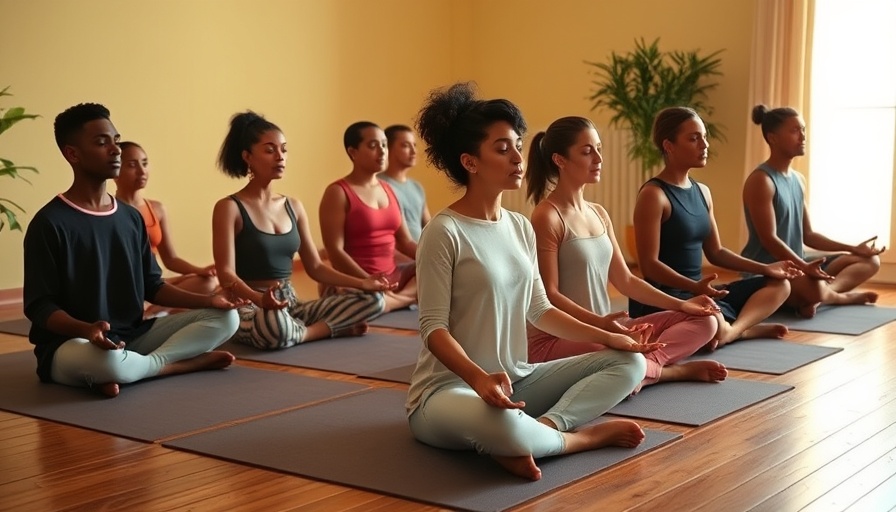
Embrace the Present: The Power of Mindfulness
In a rapidly changing world, with calendars packed and constant distractions, the quest to feel present can often feel elusive. Yet, this yearning resonates universally; as the seasons shift, nature whispers reminders of balance and stillness. Mindfulness not only fosters presence but also nurtures our emotional and mental well-being. This practice is essential in helping us navigate both joyous and challenging times, offering a wellspring of joy that enriches our everyday lives.
Three Simple Thoughts to Cultivate Presence
1. Engage Wholeheartedly with Your Surroundings:
As Willem Kuyken eloquently puts, joy springs from "wholehearted appreciative attention." This straightforward practice encourages you to pause and immerse yourself in the sights, sounds, and sensations around you. Whether it’s the feeling of the sun on your skin or the flavor of your meal, noticing these details fosters a deeper connection with the moment. This heightened awareness promotes self-compassion, allowing each day to unfold with newfound beauty.
2. Centering Yourself with Breath:
Stress often pushes us to detach from the present, leading us to ruminate about the past or worry over the future. A simple breathing exercise—such as the catchy rhyme from J.G. Larochette—grounds you: “I’ve got my feet on the floor, my spine in a line...” Practicing guided mindfulness exercises like these during stressful moments can anchor you in the now, thus enhancing mental clarity and alleviating anxiety. This basic technique is beneficial for both adults and children, making it an excellent addition to family mindfulness practices.
3. Savor Each Experience:
The dualities of life—the ups and downs—invite us to embrace all moments. Barry Boyce’s savoring practice invites individuals to deeply relish their experiences, regardless of their nature. By truly experiencing life as it comes, we can dissolve our preconceived notions and cultivate a sense of gratitude. This approach does not just transform how we view challenges into opportunities; it enriches our emotional resilience and fosters a habit of mindfulness.
The Transformative Benefits of Mindfulness
Mindfulness and mental health are intimately linked. Research indicates that regular engagement in mindfulness practices can reduce symptoms of anxiety and depression while fostering emotional resilience. When we delve into mindfulness, we unlock numerous benefits, including an enhanced ability to cope with stress, improved focus, and a greater sense of peace in our lives. Furthermore, integrating mindful eating habits can significantly improve how we perceive our relationship with food, paving the way for healthier lifestyle choices.
A Daily Mindfulness Practice: Techniques for Better Living
Incorporating daily mindfulness practices doesn’t have to be daunting. Start with a simple body scan meditation, which encourages awareness of physical sensations by focusing on different parts of the body, thus facilitating relaxation and stress relief. Transitioning into mindful self-compassion, recognize that being present and kind to oneself nurtures inner peace. Over time, such practices not only enhance personal well-being but also affect interpersonal relationships positively as compassion fosters connectedness.
Future Insights: The Continuous Journey of Mindfulness
As the world continues to evolve, the importance of mindfulness will likely become even more pronounced. Institutions and workplaces are increasingly recognizing the immense value of teaching employees mindfulness techniques, fostering not only productivity but also well-being. The absorption of mindfulness into education systems heralds a future where children learn emotional and social skills alongside traditional subjects, providing foundation stones for healthier future generations.
Conclusion: Cultivating a Mindfulness Habit
Ultimately, the journey towards feeling present is ongoing, and it involves embracing the simplicity of each moment. By engaging fully with our surroundings, centering ourselves through breathing, and savoring our experiences, we can weave mindfulness into the tapestry of our daily lives. If you're keen to adopt these practices and foster a deeper connection with your present, consider exploring more structured mindfulness resources—including guided mindfulness exercises that can deepen your understanding and embrace of the present.
 Add Row
Add Row  Add
Add 




Write A Comment